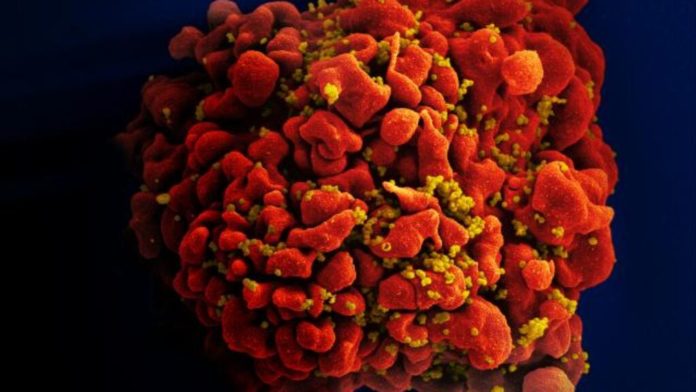
Forty years later, I can still recall my visceral reaction to reading an article in the June 5, 1981, issue of Morbidity and Mortality Weekly Report (MMWR), which opened with this sentence: “In the period October 1980-May 1981, 5 young men, all active homosexuals, were treated for biopsy-confirmed Pneumocystis carinii pneumonia at 3 different hospitals in Los Angeles, California.”
I was an infectious disease fellow at Harvard Medical School at the time, trying to keep abreast of epidemic trends from the U.S. Centers for Disease Control, which published the weekly bulletin.
One of my first thoughts was that I couldn’t believe the MMWR had actually referred to gay men, albeit in the purple prose of the era. It was completely unexpected, since I could not recall the bulletin — or the CDC, for that matter — ever having discussing sexual and gender minority people before. I was then volunteering once a week at the Fenway Community Health Center which, at the time, was a small neighborhood health clinic not far from Boston’s Fenway Park used mostly by gay and bisexual men and transgender women. There, with only limited diagnostics and a fairly rudimentary therapeutic armamentarium, I treated the most challenging presentations of sexually transmitted infections, such as recurrent warts and ulcers.
advertisement
When I read the MMWR report, which many herald as the first report of AIDS, I was struck with how the cases described were quite distinctive in that the clinical conditions differed between the men, yet their problems suggested they were severely immunosuppressed without any identifiable cause such as chemotherapy. As a nascent infectious disease specialist, I had a lot of questions, not least of which was how being gay was associated with becoming ill.
The subsequent weeks and months blurred into years of misinformation, false leads, and agonizing deaths. In the earliest days, competing hypotheses for the cause of what was then known as gay-related immune deficiency (GRID) were proposed. The “burnout” hypothesis suggested that the diversity of illnesses was not due to a single pathogen, but that people who had numerous sexual partners and/or who used many different kinds of drugs were overwhelming their immune systems. Researchers also focused on party drugs such as volatile nitrites (known as poppers), which produced a sense of euphoria and increased sexual pleasure, in an attempt to demonstrate that these drugs were particularly toxic to the immune system.
advertisement
As reports emerged of individuals who had never used drugs and/or had few sex partners getting sick because they were sexual partners of individuals who became ill and died, researchers hypothesized that the disease was caused by a transmissible organism. The question then arose as to whether the microbe was a more virulent form of a common existing pathogen, such as ubiquitous herpes simplex, or if AIDS was caused by a new one. The lack of clarity about what was causing AIDS, and the lack of a diagnostic tool that could determine who was sick and who wasn’t, fueled hysteria.
In the midst of this uncertainty, the silence of the Reagan administration was palpable, especially when compared to the attention given to the limited number of people who had become sick and died of Legionnaires’ disease or toxic shock syndrome, two other public epidemics from the 1980s. The implicit message from the administration was that because AIDS seemed to be confined to groups of individuals who didn’t matter to society, the less said, the better.
Given what was then known about who was at greatest risk of AIDS and how they might have acquired the infection, people with AIDS also had to contend with high levels of stigma and discrimination. The press routinely referred to AIDS as “the 4H disease” because it affected Haitians, homosexuals, hemophiliacs, and heroin users.
One of the first patients with AIDS I took care of was a young college student who developed lesions of Kaposi sarcoma that covered his extremities and his face, made his lymph glands swell, and caused fevers, chills, and sweats. As he became sicker and frailer, his parents accompanied him to his medical appointments. His father, a school superintendent, asked perceptive questions about his son’s condition. But his son was terrified that any suggestion on my part that he had AIDS would out him to his parents and alienate them from him just when he needed them the most. So I would answer the father’s questions only by saying that his son had a very serious malignancy, and couldn’t discuss what was truly going on.
The focus of my research ever since has been HIV and AIDS, primarily how to reduce transmission of the virus. One of the primary lessons I’ve learned, however, has little to do with biology: It is how social forces can amplify the transmission of hitherto obscure pathogens. It is clear to me that we will not succeed against SARS-CoV-2 unless we apply the following lessons from the AIDS epidemic:
Science matters. Support for getting people trained to be able to do science matters. Promotion of scientific literacy matters. Science is the creation of new knowledge. There are no such thing as “alternative” facts. As scientific knowledge expands, so does our understanding of the facts.
Discrimination is toxic. The failure to address the upstream causes of discrimination at the outset of an infectious disease outbreak will make things much worse than they otherwise would be. Homophobia, transphobia, sexism, and racism fueled the HIV epidemic. Racism and economic inequality are fueling the Covid-19 pandemic. The disproportionate impact of Covid-19 infections and health outcomes among people of color in the United States is testament to the urgent need to reduce and eliminate racial and linguistic inequities in scientific research, medical treatment, and disease prevention.
We are all in this together. We live in a global village and share a global gene pool. The HIV epidemic began in Central Africa, and disseminated because of urbanization and increased global mobility. SARS-CoV-2 apparently first appeared in China. But no country “owns” any virus or other pathogen since the patterns of dissemination of any of these wild organisms depends on human behavior, in addition to intrinsic properties of the pathogen.
AIDS taught us epidemiologic humility: There is only so much we can do. But we can do a lot. Former President George W. Bush’s President’s Emergency Plan for AIDS Relief (PEPFAR) saved millions of lives and is one of the most successful global public health interventions in history. As we scale up to vaccinate increasing numbers of individuals against SARS-CoV-2 in the U.S., Americans must understand that the pandemic is not over here until it’s over everywhere.
Kenneth H. Mayer is an infectious disease physician, medical research director of Fenway Health, co-director of The Fenway Institute, attending physician in the Division of Infectious Diseases at Beth Israel Deaconess Medical Center, professor of medicine at Harvard Medical School, and professor of global health and population at the Harvard T.C. Chan School of Public Health.








